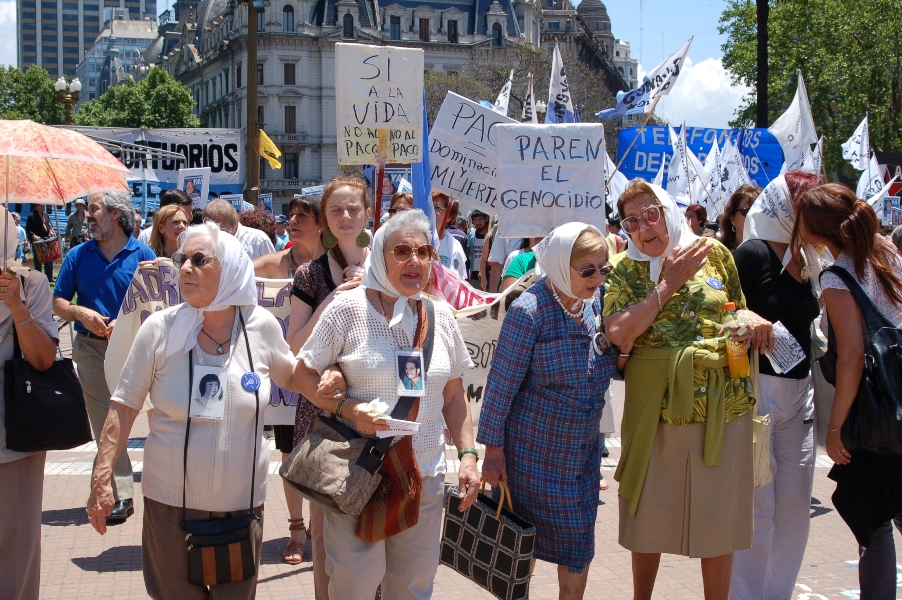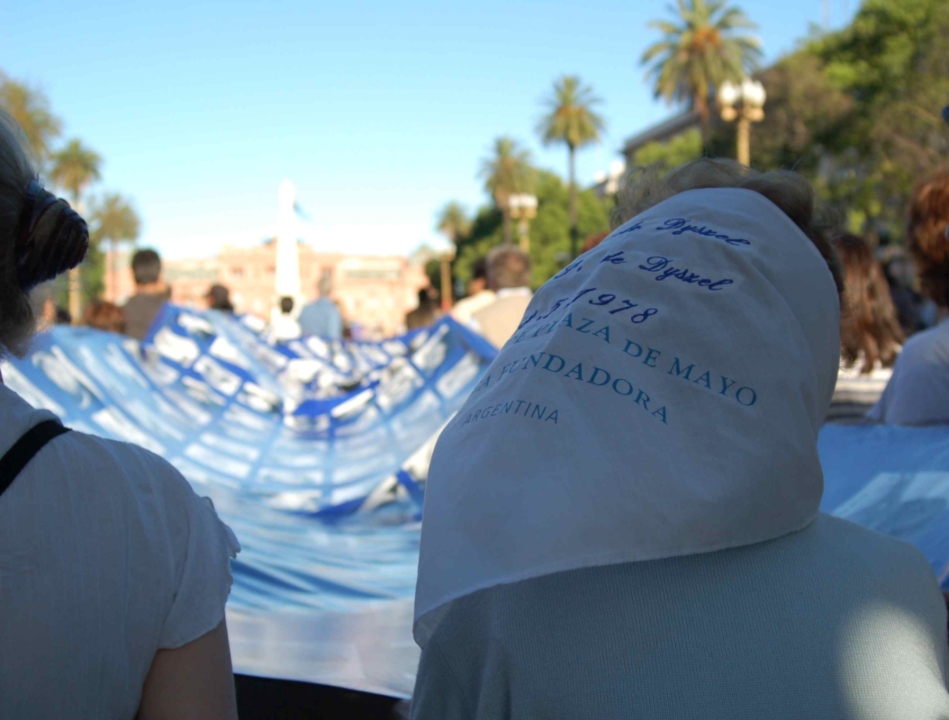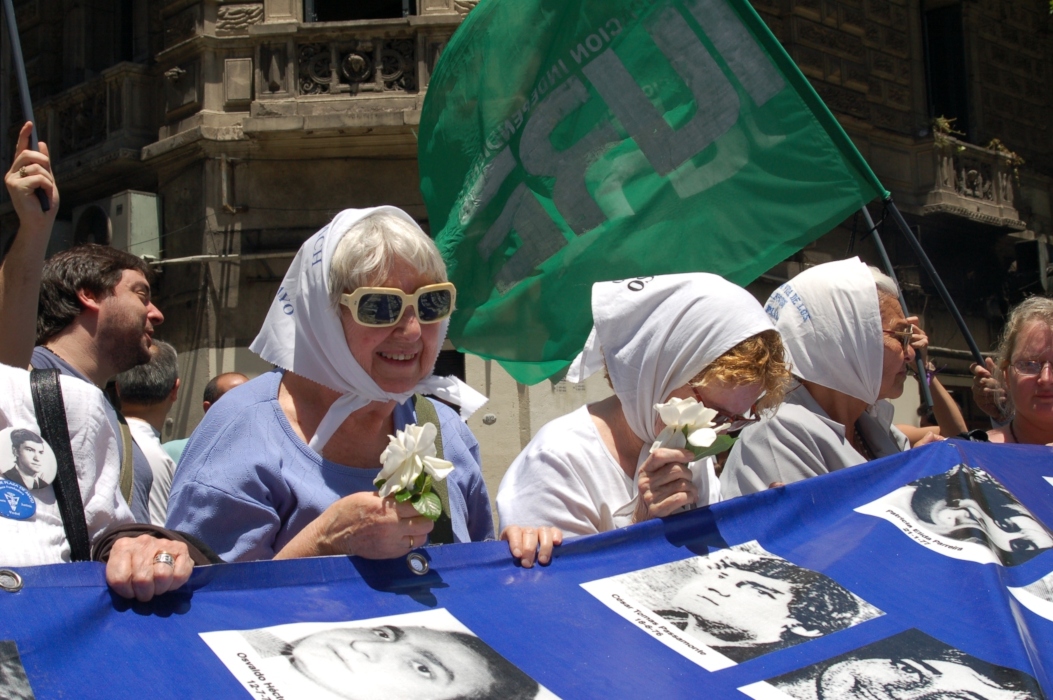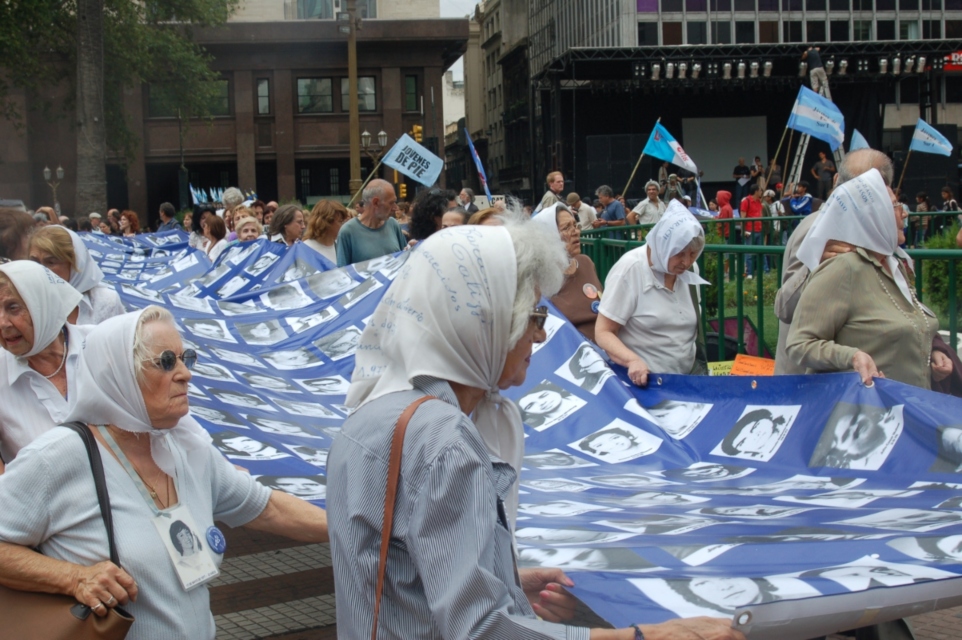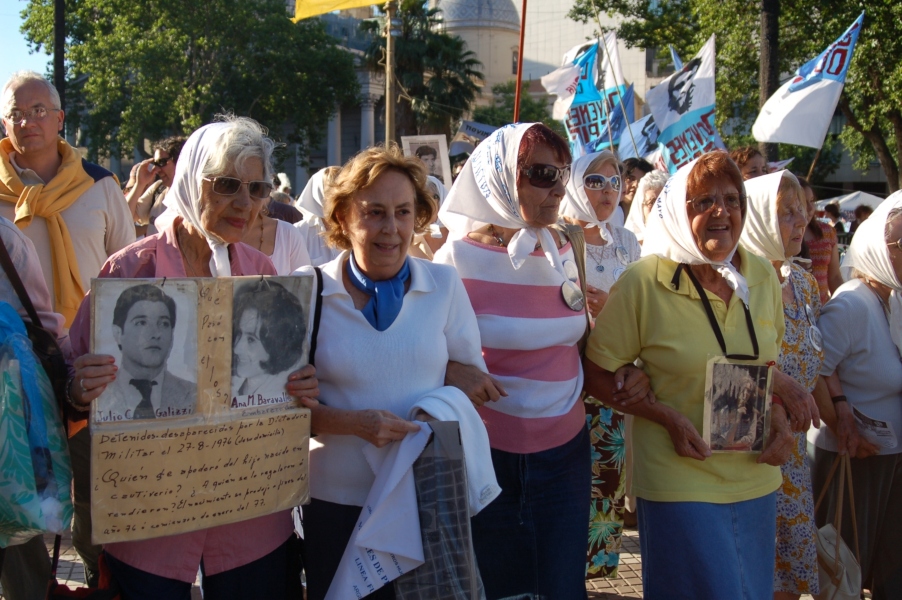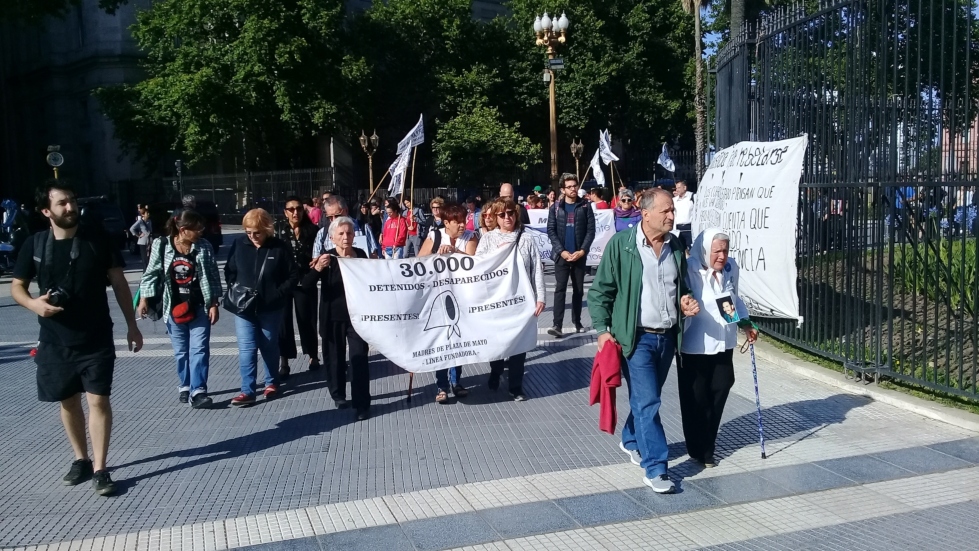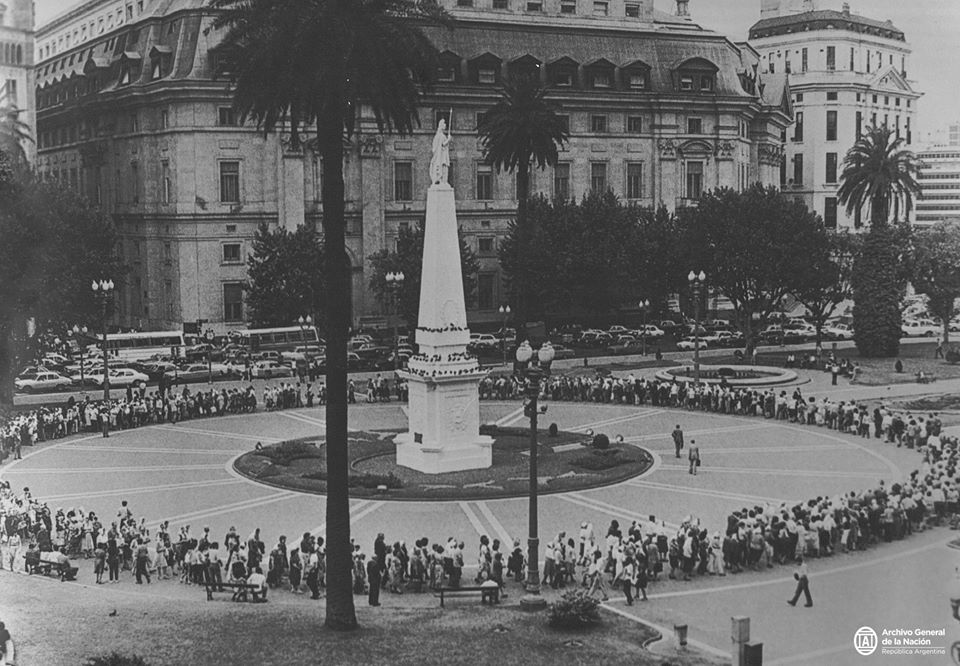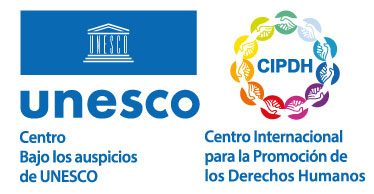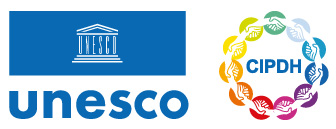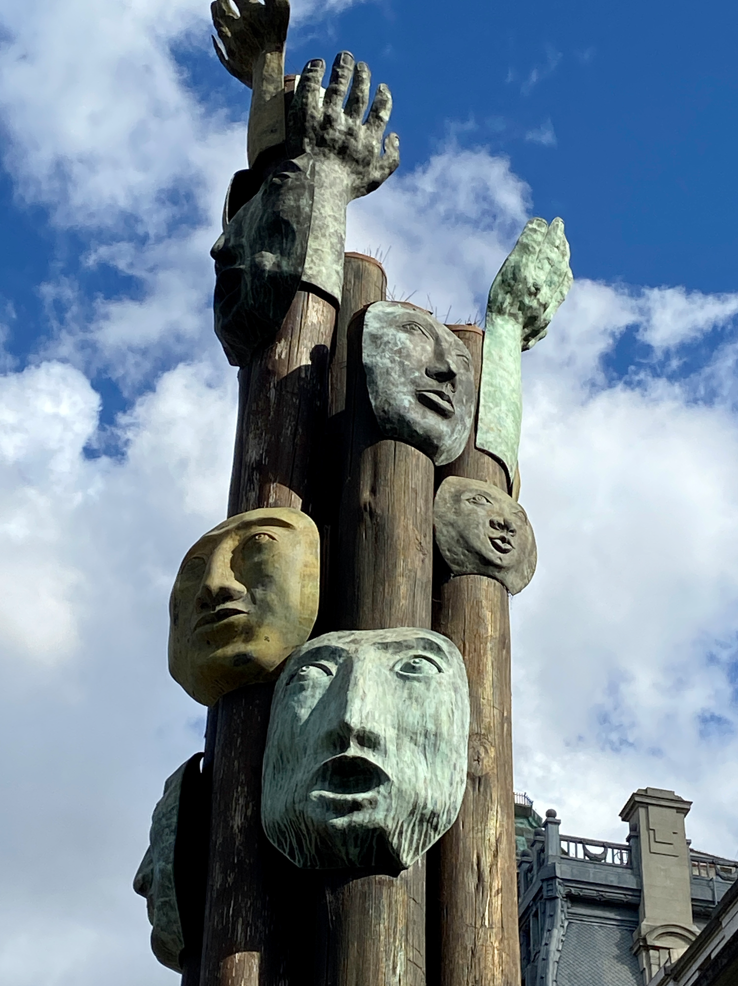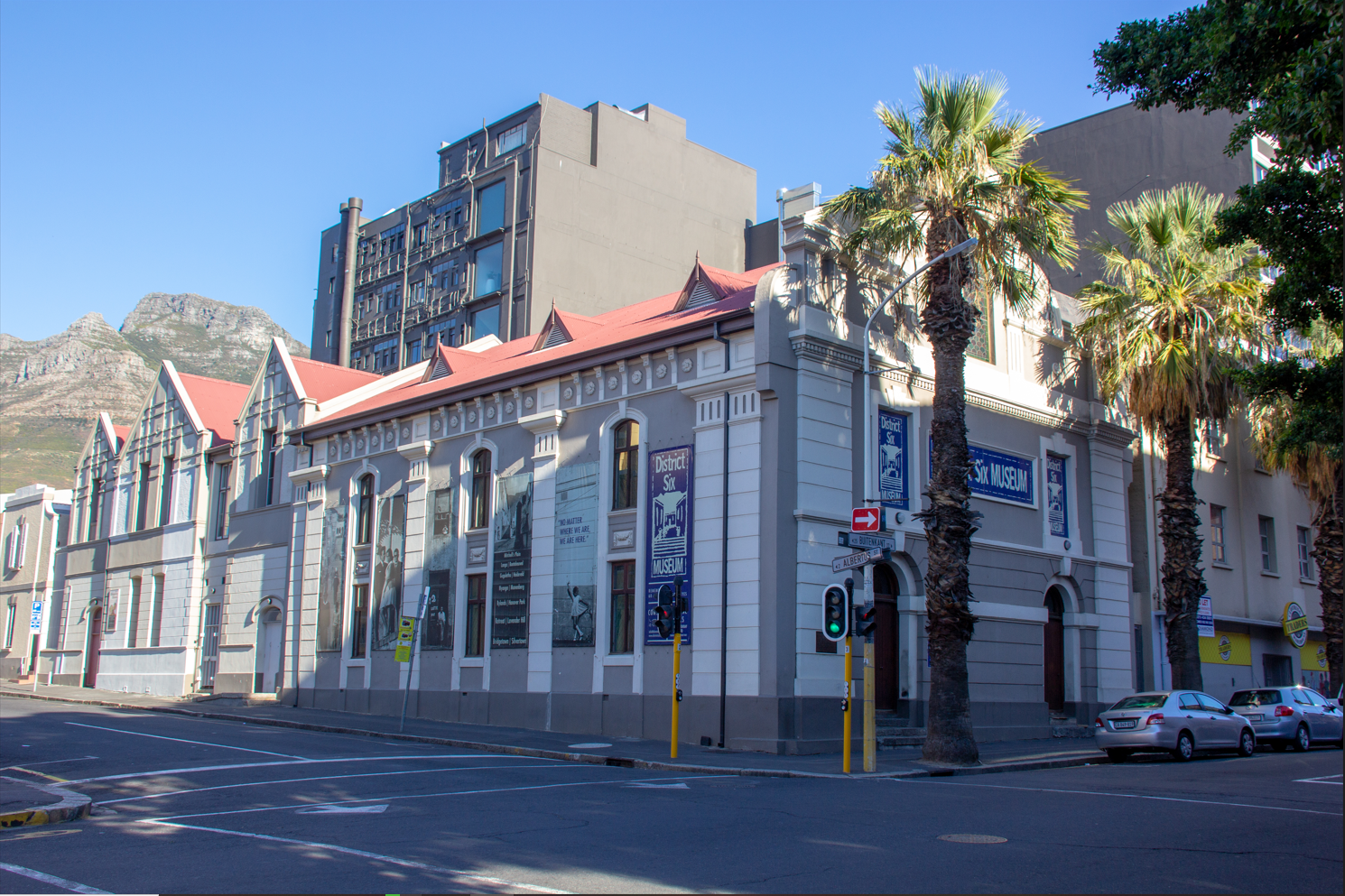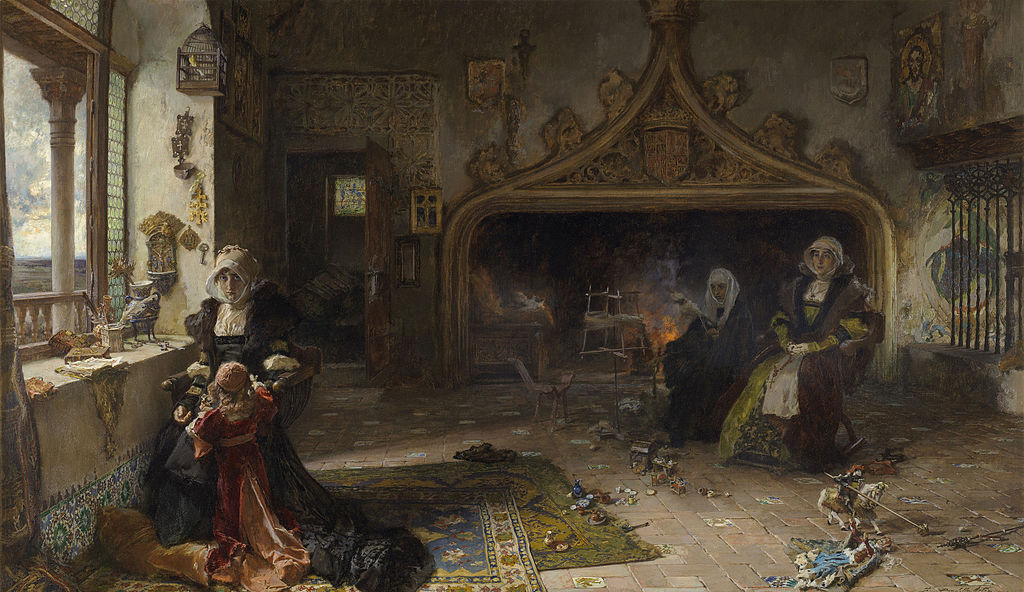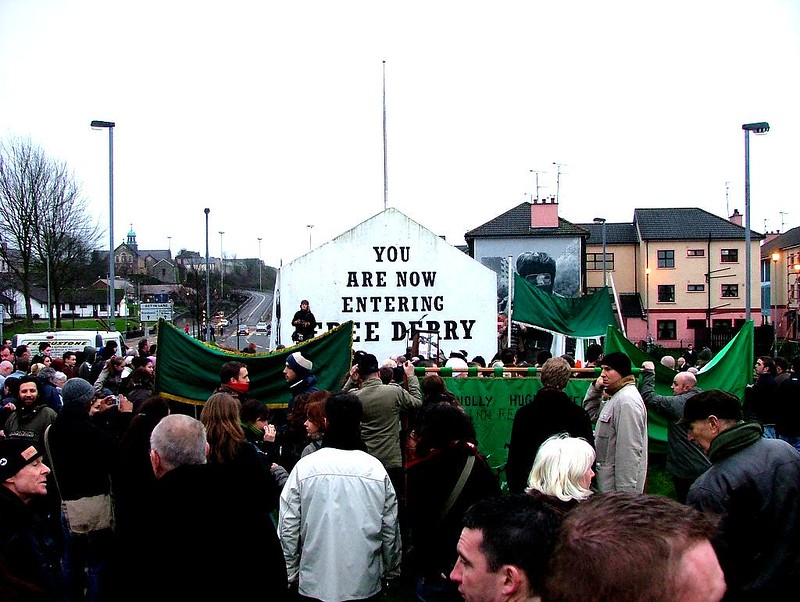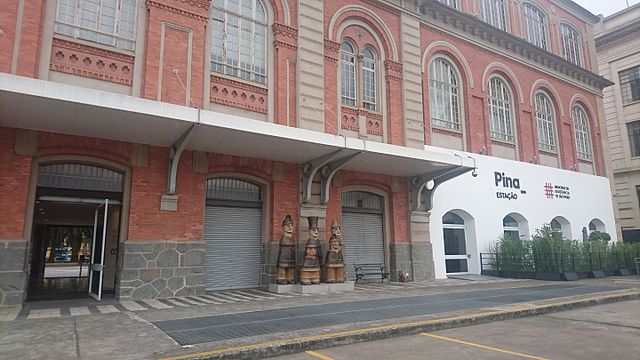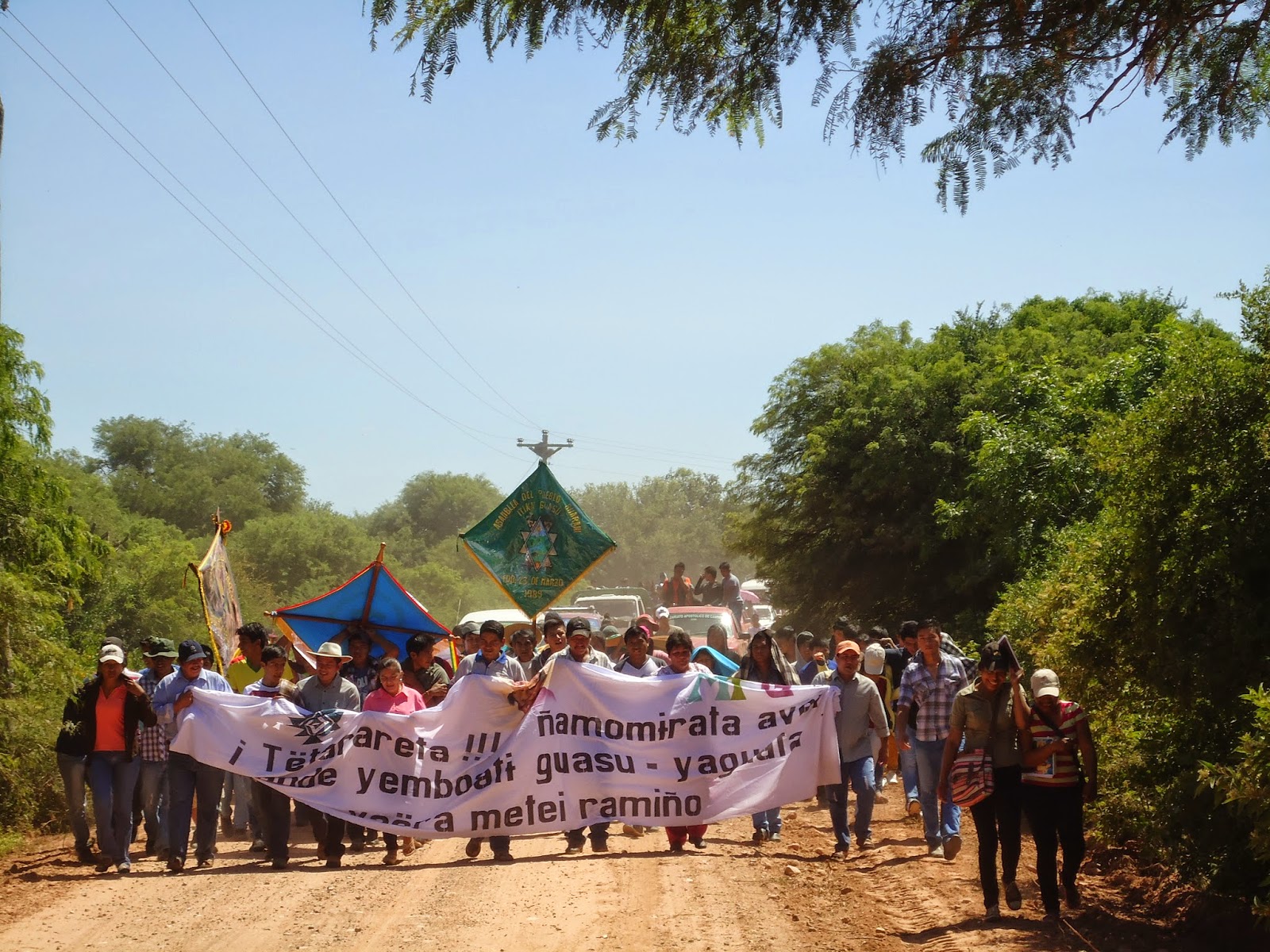The March of Mothers of Plaza de Mayo
Intangible
Theme: Political persecution

Address
Plaza de Mayo
Country
Argentina
City
Buenos Aires
Continent
America
Theme: Political persecution
Purpose of Memory
To honor the memory of their children, and all the victims of the last Argentine military dictatorship (1976-1983). To preserve the memory of what happened during the last Argentine military dictatorship.
Known Designation
The March of Mothers of Plaza de Mayo
Date of creation / identification / declaration
1977
Public Access
Free
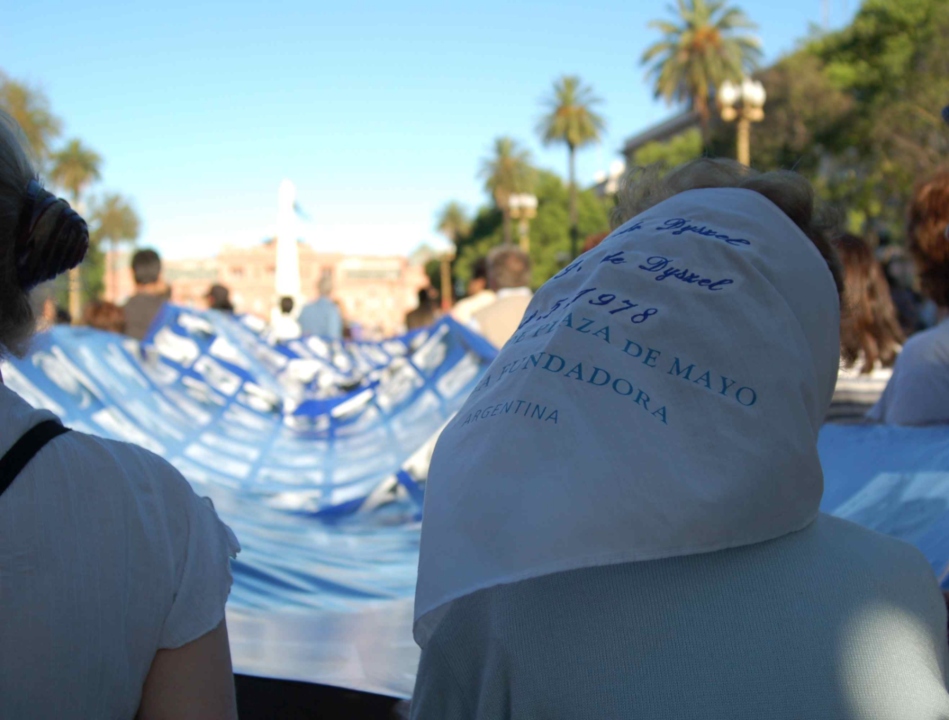
Location description
Since 1977, every Thursday at 3:30 pm, the Mothers of Plaza de Mayo walk around the Pirámide de Mayo in the center of the city of Buenos Aires. The march is open to everyone who wants to join them. The Mothers walk around the Pirámide de Mayo, located in the center of the Plaza, and wear white headscarves, a symbol with which they have been identified for years and demand to know the final fate of their children who were victims of enforced disappearance during the last civilian-military dictatorship.
Throughout the second half of the 20th century, Latin America underwent a period of political instability marked by military dictatorships and authoritarian governments, installed to fight against Communism in the context of the Cold War. In Argentina, after a long series of military dictatorships, a new coup d’etat declared on March 24, 1976, was the beginning of the most bloody repressive period of its history, ending in 1983.
The government of the self-proclaimed “Proceso de Reorganización Nacional” implemented a plan to illegally and systematically kill thousands of citizens through kidnapping, torture, arbitrary executions, enforced disappearance, thus carrying out a state terror policy. The “disappearance” modality became tragically systematic. Thousands of people were kidnapped at their homes, places of work or on the street, and subsequently became victims of enforced disappearance.
In 1977, some women, mothers of young people who had been victims of enforced disappearance, started to organize protests to demand information about their children whose whereabouts were unknown. People began to talk about the disappeared.
Azucena Villaflor, one of its founders and most important referents, was kidnapped in December 1977 and was a victim of enforced disappearance. Her body was found on December 20 at the beach in Buenos Aires and was buried as “NN” (a person of unknown identity). In 2003, the body was exhumed and identified in 2005 with the help of the Argentine Forensic Anthropology Team. Azucena, like so many other people kidnapped and victims of enforced disappearance in Argentina, had been taken by military aircrafts and thrown to the Rio de la Plata river from a great height in the so-called “death flights”.
Shortly after the military coup d’etat, several mothers of the victims of enforced disappearance in the context of the Argentine dictatorship started to meet in different public offices to ask about the whereabouts of their children. They would present their claims at Ministries, police, military and judicial offices, churches and the offices of emerging human rights organizations. They began to know one another and to understand that their problem was shared by many others. The authorities denied having any information, “ignored”, and promised to investigate the claims but did not do so in the end, while judges rejected the Habeas Corpus that mothers filed to know the whereabouts of their children.
Knowing that this situation repeated itself and that an individual claim led them nowhere, Azucena Villaflor de Vicenti, urged and suggested other mothers to meet, act together, become visible. The first meeting took place in Plaza de Mayo, on Saturday, April 30, 1977, although it did not have the impact they were expecting. They decided to move the date of the meetings to Thursdays at 3:30 pm, the busiest time in Plaza de Mayo, a place in the center of the City of Buenos Aires. As from their first meeting, these women understood the importance of drawing the attention of people on the street to make their claim visible. Due to the state of siege decreed by the military regime, the constitutional right to freedom of assembly got suspended, so police officers would make them leave the place by shouting at them “please walk”. This is why they started to walk in circles around the Pirámide, a central point at Plaza de Mayo. That day in April 1977, fourteen Mothers of Plaza de Mayo walked around the Pirámide, and that day is considered as the beginning of the March of Mothers of Plaza de Mayo.
In October 1977, they decided to participate as a group in the annual pilgrimage to Luján. In order to identify and recognize themselves, they covered their heads with white headscarves.
On the day the World Football Cup began in 1978, Dutch television broadcast the March of Mothers of Plaza de Mayo on that Thursday, allowing them to make their claim visible worldwide for the first time, despite the censorship and government campaigns. Demonstrations to boycott the World Cup abroad also contributed to its dissemination.
Even after the arrival of democracy in the country in 1983 and to date, the Mothers continue performing their marchs and participating in other demonstrations to claim for justice and to know the final fate of their children who were victims of enforced disappearance. They have received recognition from a large number of international organizations and have given their support to many other groups that promote human rights.
The two symbols that represent them, the marchs on Thursdays and the white headscarves, have become a symbol against authoritarianism.
